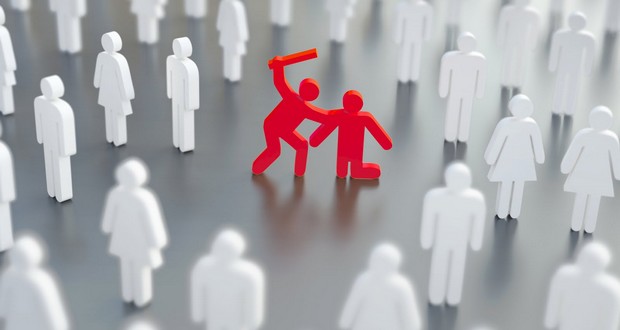1Pratfall effect

In social psychology, the pratfall effect is the tendency for attractiveness to increase or decrease after an individual makes a mistake, depending on the individual’s perceived ability to perform well in a general sense. A perceived able individual would be, on average, more likable after committing a blunder, while the opposite would occur if a perceived average person makes a mistake.
2Bystander effect

Bystander effect also known as bystander apathy, is a social psychological phenomenon that refers to cases in which individuals do not offer any means of help to a victim when other people are present. The probability of help is inversely related to the number of bystanders. In other words, the greater the number of bystanders, the less likely it is that any one of them will help.
3Spotlight effect

Spotlight effect is the tendency to overestimate the amount that other people notice your appearance or behavior. The reasoning behind the spotlight effect comes from the innate tendency to forget that although one is the center of one’s own world, one is not the center of everyone else’s. Many professionals in social psychology encourage people to be conscious of the spotlight effect and to allow this phenomenon to moderate the extent to which one believes one is in a social spotlight.
4Focusing effect

Anchoring or Focusing effect is a cognitive bias that describes the common human tendency to rely too heavily on the first piece of information offered (the “anchor”) when making decisions. During decision making, anchoring occurs when individuals use an initial piece of information to make subsequent judgments. For example, the initial price offered for a used car sets the standard for the rest of the negotiations, so that prices lower than the initial price seem more reasonable even if they are still higher than what the car is really worth.
5Cocktail party effect

The cocktail party effect is the phenomenon of being able to focus one's auditory attention on a particular stimulus while filtering out a range of other stimuli. The effect enables people to talk in noisy locations. For example, when conversing at a musical concert, people can listen to the band and understand a friend all at the same time. They can also simultaneously ignore loud noises. Nevertheless, if someone calls out your name from across the room, people will notice.
6Online disinhibition effect

Online disinhibition effect refers to the way people behave on the internet with less restraint than in real-world situations. Many people change their natural behavior online. It is an extremely powerful cognitive phenomenon that is represented by the loosening of social restrictions and inhibitions that would otherwise be present in normal face-to-face interaction. Because of the loss of inhibition, some internet users show extreme and emotional tendencies. Some people will become more affectionate and less guarded, speaking out to others about their feelings in an attempt to achieve emotional catharsis.
7Illusory superiority

Illusory superiority is a cognitive bias that causes people to overestimate their positive abilities and underestimate their negative qualities in relation to others. It is a positive illusion that has been studied extensively in social psychology. Positive illusions have been described as human’s unrealistically favorable attitude toward themselves. There are three broad categories of positive illusions, inflated assessment of one’s own abilities, unrealistic optimism about the future and an illusion of control. Illusory superiority is often referred to as the above average effect. The above-average effect states that people regard themselves more positively and less negatively than others actually perceive them.
Latest FactRepublic Video:
15 Most Controversial & Costly Blunders in History
8Cognitive dissonance

Cognitive dissonance is perhaps one of the weirdest and most unsettling findings in psychology. It is the idea that we find it hard to hold two contradictory beliefs, so we unconsciously adjust one to make it fit with the other. In the classic study, students found a boring task more interesting if they were paid less to take part. Our unconscious reasons like this: if I didn’t do it for money, then I must have done it because it was interesting. As if by magic, a boring task becomes more interesting because otherwise, I can’t explain my behavior.
9Tetris effect

Tetris effect is where a person devoting a large amount of time to a particular pattern-based activity (which in this case is Tetris) will start unconsciously thinking and dreaming about it. People who played Tetris for a prolonged amount of time could find themselves thinking about ways different shapes in the real world can fit together, such as the boxes on a supermarket shelf, the buildings on a street, or hallucinating pieces being generated and falling into place on an invisible layout.
10Cheerleader effect

The cheerleader effect, also known as the group attractiveness effect is the cognitive bias which causes people to think individuals are more attractive when they are in a group. The term was coined in 2008 during the How I Met Your Mother episode “Not a Father's Day”, and has been backed up by clinical research by Drew Walker and Edward Vul. The effect occurs because of the brain’s tendency to calculate the average properties of an object when viewing a group.




